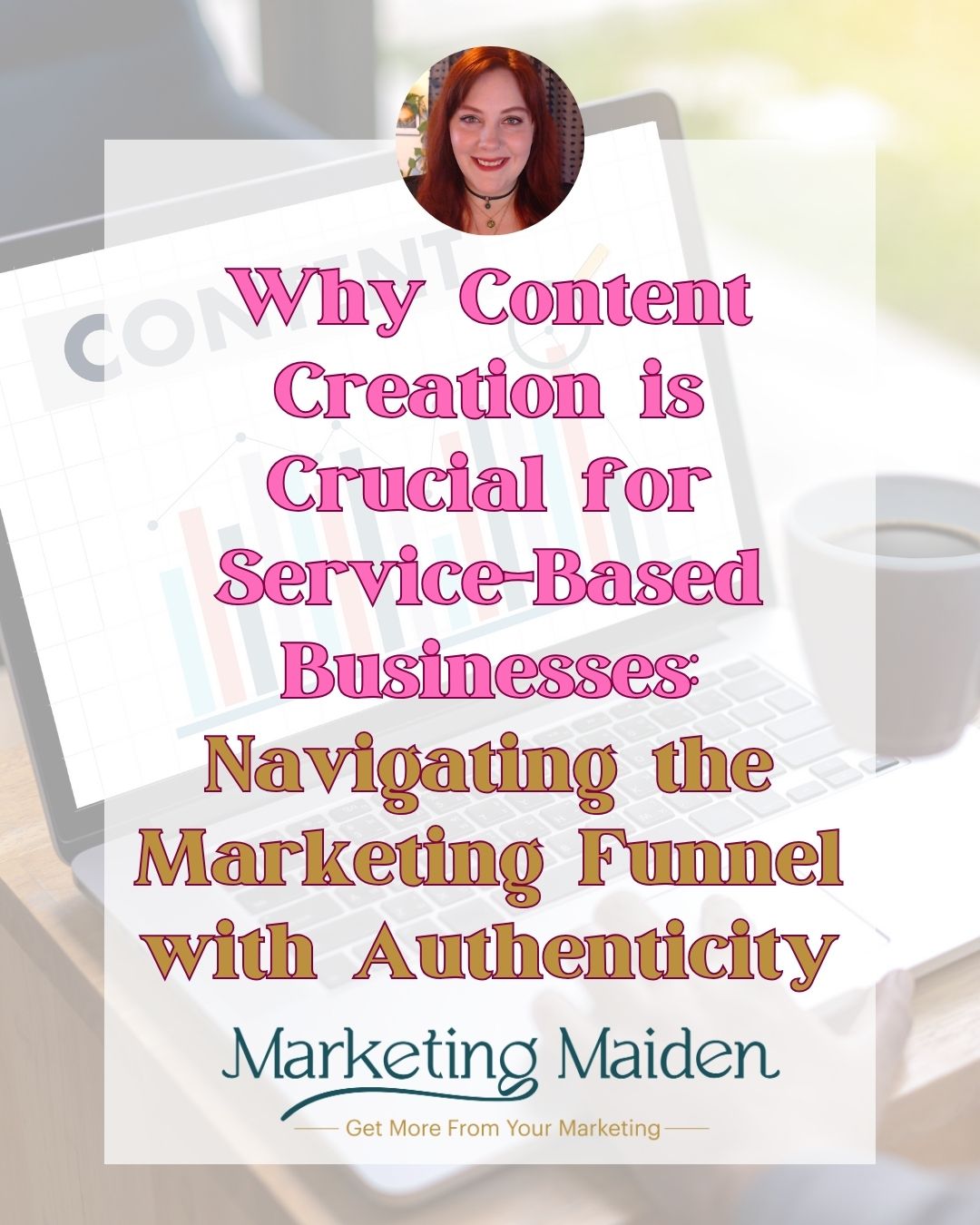In the fast-paced world of digital marketing, content creation is not just a buzzword; it’s a necessity. For service-based business owners, understanding the power of content is crucial. This blog explores why content creation is important, delves into its positive impacts, and provides actionable insights on creating a content strategy that resonates.
1. The Essence of Content Creation in Today’s Digital Landscape
In the digital age, content is more than just information; it’s the key to connecting with your audience. For service-based businesses, content creation is not just about producing material; it’s about crafting messages that resonate with your audience at every stage of the marketing funnel.
Why is creating content so important? In simple terms, it’s the bridge between your business and your clients. Content marketing allows you to communicate, educate, and persuade. It’s a way to showcase your expertise, build trust, and establish a loyal customer base. But it’s not just about what you create; it’s about how you create it. Authentic, engaging content that speaks to the needs and challenges of your audience is what sets successful businesses apart.
2. Learning Content Creation: A Game-Changer for Business Owners
Why is learning content creation important? For busy business owners, the thought of adding content creation to an already full plate can seem daunting. However, learning the art of content creation is a game-changer. It empowers you to control your narrative, engage effectively with your audience, and drive meaningful conversations.
When you create content that addresses the specific needs of your clients at different stages of their journey, you’re not just selling a service; you’re providing value. This approach ensures that your content marketing strategy is not only effective but also efficient.
3. The Impact of Content: Beyond the Surface
Why is the content important? Content is the voice of your brand. It’s how you tell your story, share your values, and communicate your unique selling proposition. In a world where consumers are bombarded with information, quality content helps you stand out. It’s not just about being seen; it’s about being remembered.
What are the positive effects of content creation? Well-crafted content can increase visibility, enhance SEO, and drive engagement. It’s a tool for educating your audience, solving their problems, and positioning your business as the go-to expert in your field.
4. Types of Content and Their Impact
The type of content you produce can significantly influence how your audience perceives and engages with your brand. Let’s explore some common content types:
- Blog Posts: These are foundational for any content marketing strategy. They offer a platform for sharing insights, educating your audience, and addressing common questions or concerns. Blogs are particularly effective for SEO, helping to improve your website’s search engine ranking through keyword integration.
- Videos: Video content has surged in popularity, thanks to its high engagement rates. From explainer videos to customer testimonials, they provide a dynamic way to showcase your services and connect emotionally with your audience.
- Infographics: Infographics are excellent for presenting data or complex information in an easy-to-digest, visually appealing format. They are highly shareable, making them great for social media and increasing brand visibility.
- Email Newsletters: Regular newsletters keep your audience updated and engaged. They can be used to share blog content, news about your services, or exclusive offers, directly nurturing leads and maintaining customer relationships.
Each content type offers unique advantages and can be used at different stages of the marketing funnel. For instance, blog posts and infographics are great for the awareness stage, while videos and detailed guides are more suitable for the consideration stage.
5. Content Creation Strategies
Developing a robust content creation strategy involves several key steps:
- Analyzing Competitor Content: Look at what your competitors are doing to identify gaps in their strategies and opportunities for your content to stand out. This can also provide insights into what resonates with your target audience.
- Leveraging Customer Feedback: Use feedback from your customers to understand their needs and preferences. This can guide the development of content that addresses their specific questions or challenges. Content created from some of your most frequently asked questions can educate customers on their biggest questions.
- Content Type and Format Selection: Choose the right type and format based on your audience’s preferences and your marketing goals. For example, a younger audience might prefer engaging videos, while a professional audience might appreciate in-depth whitepapers or case studies.
6. Email Marketing and SEO: Pillars of Your Content Strategy
Email marketing and SEO are two crucial elements of a successful content strategy. Through targeted email campaigns, you can nurture leads, provide personalized content, and keep your audience engaged. SEO, on the other hand, ensures that your content is discoverable by those who need it most. When combined, these tools create a powerful mechanism for driving traffic, generating leads, and converting prospects into loyal customers.
7. StoryBrand Marketing Framework: Making the Customer the Hero
When creating your content, use The StoryBrand Marketing Framework as your writing compass. The StoryBrand Marketing Framework is a transformative approach to content creation. It emphasizes making the customer the hero of your story. This customer-centric approach ensures that your content resonates deeply with your audience, addressing their challenges and aspirations.
By using this framework, you create content that goes beyond selling a service. You create stories that empower your clients, showing them how your services can transform their reality. This strategy ensures that your content cuts through the noise and makes a genuine impact.
8. Tailoring Content for Different Stages of the Marketing Funnel
Understanding the marketing funnel is key to creating effective content. For each stage – awareness, consideration, and decision – your content should cater to the specific needs and mindset of your audience.
In the awareness stage, focus on educational content that addresses common problems and questions. During the consideration stage, offer more detailed information about your services, showcasing your expertise and differentiators. Finally, in the decision stage, provide persuasive content that highlights the benefits of choosing your service, backed by testimonials and case studies.
Conclusion: Making Content Creation Work for Your Business
Is content creation worth it? Absolutely. When done right, content creation is a powerful tool that drives growth, builds relationships, and establishes your brand as a leader in your industry.
For busy business owners, the journey of content creation is both challenging and rewarding. By embracing a strategy that focuses on authenticity, customer-centric storytelling, and strategic use of email marketing and SEO, you can create content that not only informs but also inspires.
Remember, content creation is not a one-time effort; it’s an ongoing process of connecting, engaging, and growing with your audience. Start your journey today, and watch as your content opens new doors for your business.
Ready to elevate your content strategy? Let’s create content that resonates, engages, and converts. Connect with us to learn more.





0 Comments